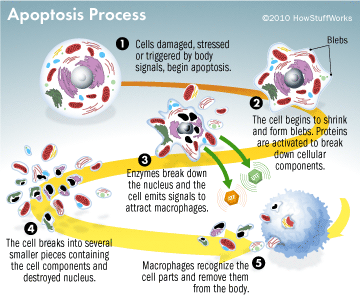Over the last two decades chemists and researchers have been following up with a potential breakthrough in cancer-fighting treatment options. The potential breakthrough is made possible by the two-decade old hypothesis regarding the discovery of a natural substance called prodigiosin.
Two decades ago prodigiosin was discovered and researchers learned of its anti-cancer properties. What they found is that the is substance acted as a natural ion transporter. By acting as an ion transporter the substance immediately raised eyebrows about its’ cancer fighting possibilities in the way it facilitated transportation of ions directly into a cell.
 The process of ion transportation is extremely useful in cancer related research because it can induce a process called apoptosis. Apoptosis is a process by which cells self-destruct. When human cells loose their stable balance of ions within the cell, the cell can trigger the process of apoptosis and then self destruct. So, by transporting chloride anion into cells, the stable balance of the cell is broken and it’s “programmed destruction” can occur. Because cancer works in such a way that abnormal cells divide and spread throughout the body, research into ways to target and kill these diseased cells individually is crucial.
The process of ion transportation is extremely useful in cancer related research because it can induce a process called apoptosis. Apoptosis is a process by which cells self-destruct. When human cells loose their stable balance of ions within the cell, the cell can trigger the process of apoptosis and then self destruct. So, by transporting chloride anion into cells, the stable balance of the cell is broken and it’s “programmed destruction” can occur. Because cancer works in such a way that abnormal cells divide and spread throughout the body, research into ways to target and kill these diseased cells individually is crucial.
Researchers from the University of Texas along with researchers from five other institutions have worked together to create a synthetic ion transporter that brings the chloride anion into the cell. This concept of synthetic ion transport is not new, but the successful implementation in a real biological system demonstrating its to ability to trigger apoptosis in cultured human cancer cells, is.
What researchers did was create a synthetic ion transporter that naturally bonded to chloride ions. This synthetic molecule creates a protective blanket around the ion protecting it and allowing it to enter into a cancer cell and be dissolved. This is a monumental discovery because one of the ways cancer works is to stop the deformed cells from dying by blocking the sodium ions from entering into the cell. Research has shown that cancer cells change the way they transport ions into themselves, thus stopping the apoptosis process from ever occurring and inevitably paving the way for these cells to reproduce and not be stopped.
This new demonstration will pave the way for further research into new ways to fight cancer and even cystic fibrosis. The next step in this research is to find a way to develop a version of a chloride anion transporter that only binds to cancer cells. As of right now, the synthetic molecule that was created triggers cell death in both cancerous cells and healthy cells.
Next in line for the researchers is to starting testing on animals. Researchers are hopeful that their new synthetic ion transporter could be linked to a site-directing molecule that would essentially target only the caner cells and not the healthy cells making it an effective way to stop cancer cells dead in their tracks.

